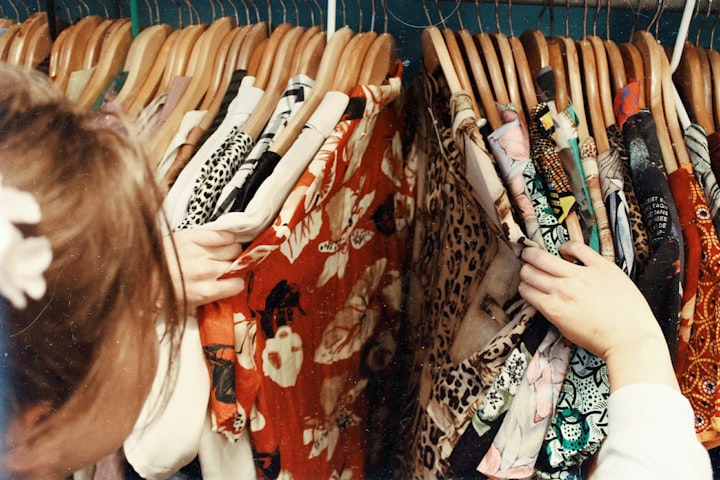How to Buy a Diamond: A Beginner's Guide to the 4Cs
How do you buy a diamond? Although it may seem simple enough to find the perfect stone, purchasing a diamond involves more than just picking out a pretty gemstone and paying for it. Diamond quality, price, and value are determined by several factors that aren't visible to the naked eye.

How do you buy a diamond? Although it may seem simple enough to find the perfect stone, purchasing a diamond involves more than just picking out a pretty gemstone and paying for it.
Diamond quality, price, and value are determined by several factors that aren't visible to the naked eye. Find out what the 4Cs of diamond quality mean, whether you are shopping for an engagement bracelet or learning more about them.
What are the 4Cs?
The GIA 4Cs of diamond quality are Carat, Cut, Clarity, and Color. Carat weight is how a diamond is measured and the diamond's size. The cut is how well the diamond has been cut and includes the height, depth, angles, and other factors.
Clarity is how many blemishes or inclusions are and is judged on a 6-point scale from included to flawless. Colour is evaluated on a scale from D (no hue) to Z (a yellow-hued diamond). With these four factors, you can understand a diamond's quality.
But two additional features will help to determine a diamond's worth. The first is fluorescence which is when a diamond emits light. It could be an H-I colour if it does not have any fluorescence.
Still, if it does have fluorescence, it could be an I-J color which would make the stone worth more money because this type of the gem is rarer than an H-I colored stone.
Another feature that will affect the price is whether or not any inclusions make the rock cheaper and less valuable than diamonds without any inclusions.
Cut
Of all the 4Cs, the cut has the most significant influence on a diamond's beauty. It is responsible for a diamond's sparkle, fire, and brilliance. Pay attention to a diamond's symmetry, polish, and proportion when assessing a cut. These factors can affect a diamond's symmetry:
-The number of facets (or flat surfaces)
-The angle and depth of those facets
-The height of the crown (the top part of the diamond above the girdle)
-The thickness or depth of the pavilion (the bottom part of the diamond below the girdle)
A well-cut diamond will appear bright and full of life.
Carat
When it comes to a carat weight, the first thing you need to understand is that bigger does not always mean better. In fact, many experts say that the best value in a diamond is actually found in stones that are one carat or less.
This is because diamonds over one carat are rare and, therefore, more expensive. So, if you're on a budget, you may want to consider a stone that is just under one carat. For example, look at this one-carat diamond ring from the Blue Nile. The clarity of the stone makes it a great buy.
Color
The first thing you'll notice about a diamond is its color. In most diamonds, the term actually refers to the absence of color. The scale that rates diamond colour goes from D (no hue) to Z (a yellow-hued diamond).
The most popular and expensive diamonds are in the D-F range because they are colourless. G-J coloured diamonds are also famous, but they have a slight hint of yellow that is not visible to the naked eye.
Anything below J on the colour scale is not recommended for engagement rings because they will have a visible yellow tint. Lower grades of color do not affect a diamond's sparkle or durability, but they can significantly reduce the stone's value.
Clarity
The GIA clarity scale goes from included (I1, I2, and I3) to flawless (FL). Most diamonds fall somewhere in the middle of these two extremes. The main thing you want to look for is how noticeable the blemishes and inclusions are.
If they're not visible to the naked eye, you don't need to worry about them too much. However, diamonds will be less valuable if they're very noticeable.
You can see an example of this on a Mohs hardness scale. For example, let's say that both diamonds have a 1-carat size and H colour grade.
One has an SI1 rate, and the other has an SI2 status. Although both have good qualities, the one with an SI1 angle will likely be more expensive because it has better clarity features than the other.
1. Choose a jeweller as you would choose a doctor.
You wouldn't go to just anyone for medical advice, so don't do the same when choosing a jeweller!
When you're looking for someone to help you purchase a diamond, choose a jeweler who has completed the GIA Graduate Gemologist or Applied Jewelry Professional diploma programs. These rigorous and comprehensive programs ensure that your jeweler is an expert in the field.
2) Insist On a Diamond Grading Report
When making such a necessary purchase, you want to ensure you get what you are paying for. A diamond grading report from the Gemological Institute of America (GIA) is the best way to do this. The GIA is a scientific, unbiased source that grades diamonds based on the 4Cs: carat weight, color, clarity, and cut.
3) Protect The Purchase
When you buy a diamond, you're making a significant investment. So, it's essential to protect that investment by getting the stone appraised and insured.
Appraisers and insurers rely on diamond grading reports to accurately evaluate the value of gems. The most reputable pieces come from the Gemological Institute of America (GIA).
Conclusion
If you're looking for guidance on how to buy a diamond, the GIA 4Cs is a great place to start. Remember that a diamond's cut, Clarity, Color, and Carat weight affect its quality and price. With this knowledge, you'll be better equipped to find the perfect diamond for you.
Author -Mohd Aaqib
Hi,
My Name is Mohammad Aaqib the founder of Pandorabracelet.co.uk
I am a Lawyer by profession but Blogger by passion.
Pandorabracelet.co.uk will be an operating system for Blogging.
About the Creator
BLOGGER AAQIB
Hi,
My Name is Mohammad Aaqib the founder of Pandorabracelet.co.uk
I am a Lawyer by profession but Blogger by passion.
Pandorabracelet.co.uk will be an operating system for Blogging.






Comments
There are no comments for this story
Be the first to respond and start the conversation.